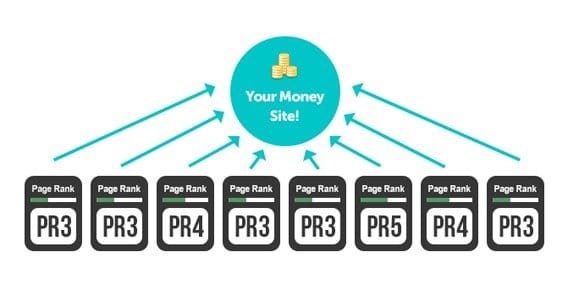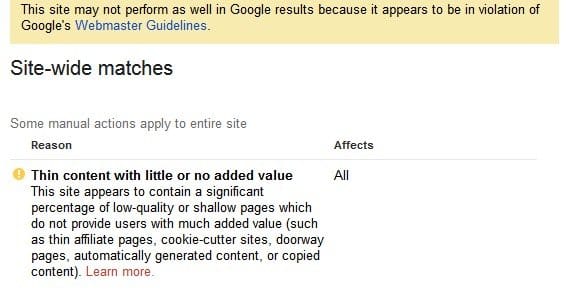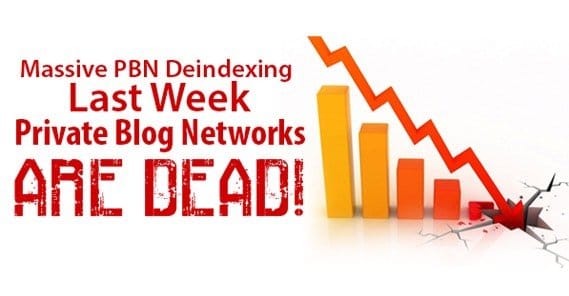What are PBNs and Are They a Worthwhile Investment?

PBNs are a controversial technique espoused by black and gray hat marketers, but condemned by Google. Like all such strategies, they can work, and they can work very well. On the other hand, they can be a huge time and resource sink that can backfire and destroy all of your hard work thus far.
What Is a PBN?
PBN stands for Private Blog Network, and that alone should tell you most of what it means. It’s just a pile of blogs all owned by one person. Often times, these are set up on free domains, like WordPress.com or Tumblr. However, the truly high-power PBNs are set up on self-hosting, often using several hosts and different site designs and architectures to make the sites look dissimilar.
Often times, a PBN is based on other strategies, in particular expired domain marketing. PBN owners watch domain auction sites for interesting or potentially relevant domains. They look for domains that have some lingering value, so they get a head start on their traffic generation. They build out a mediocre blog, just good enough to maybe look legit, but far from good enough to ever rank well.
The purpose of this is to use the blogs in the PBN to accumulate minor amounts of link juice in each blog. On their own, they’re basically valueless. When you have 50, 100, 200 of them, though, those minor bits of value add up. You can then link to your money site from each of the sites in your PBN, and those links will give a huge boost to the SEO ranking of the money site.
Obviously, Google dislikes this strategy because it’s a way of circumventing their algorithmic analysis by introducing artificial links. If the algorithm can be manipulated, the manipulation becomes the focus, not the elements Google prefers, like user satisfaction or content value.
The Pros and Cons of PBNs
Using PBNs, no matter what anyone else tells you, is a black hat technique. It’s directly called out by Google as a technique they don’t want webmasters to use, and a technique that can get users penalized. Anyone claiming that you can run a PBN without possibility of penalty is lying, probably to sell you their own PBN builder software.
Now, there’s one crucial line that makes a PBN a bad technique, and that’s organic purpose. Most PBNs are populated with thin, stolen, copied, or spun content. They’re barely one step above spam sites, and only because the content is technically human-readable. On their own, though, they offer virtually no value. Their content is basic and boring, they don’t have any extra value attached, and they don’t serve a purpose as a sales portal or support location. They’re often barely active, only a couple of thin posts per month, if any at all.
You can, by contrast, own an interrelated network of blogs that benefit you. One big example of this is the Gawker media network. Deadspin, Gawker, Gizmodo, Io9, Jalopnik, Jezebel, Kotaku, Lifehacker; these are all very similar format blogs run by the same group of people. If you squint, they meet the technical definition of a PBN.
The reason they differ is two-fold. First, they provide value. They do original reporting, they have legitimate stories, and they’re frequently updated. The second is their variance. Jezebel and Jalopnik publish different kinds of content. You’re never going to find one site linked to on all of them unless it’s something part of the Gawker network itself. You can’t go and buy a link from all of the Gawker sites.
PBNs are thin; real blogs are not. That’s the main difference. So, keeping the definition of a PBN in mind, what are the pros and cons of using one?
Cons:
- They can be very expensive to build and maintain. You need to buy a domain name, which can be anywhere from $10 to $100 depending on the quality of the domain. You need to pay for private WHOIS protection. You need to pay for hosting. You need to pay for content, whether you’re going the 2-star Textbroker route or buying an article spinner and stealing content. You also might be suckered into buying a PBN builder software that automates most of this, but cuts corners, makes everything less efficient, and costs as much on its own.
- They suck up a lot of time. Monitoring domain auction sites alone is going to eat hours of your day, and there’s no guarantee you’ll even get a domain you can use. Then you need to do all of the registration and setup work, which can take hours or days. You need to keep maintaining the sites, which can suck up even more time, particularly if you’re not automating things to minimize potential detection.
- They are exceedingly risky. Google is constantly on the lookout for PBNs, and if they find yours – they very likely will – you can get all of your sites deindexed and you can find a manual action taken against your money sites. This turns all of the positive value of the PBN into negative value, leaving you with nothing but a hole to dig yourself out of.
- They don’t last. There’s generally a rotation with PBN sites because even if the whole network is safe, individual sites can be penalized and deindexed easily. It’s easier to drop the site and replace it than it is to recover from such a penalty. You’re constantly cycling through sites and repeating this whole process.
Pros:
- You have a lot of control over your SEO. You can dictate when and where the links come in, what anchor text they use, and a whole lot of other experiments. You can use PBNs to test Google changes and to try to reverse-engineer backlink value from Google. They can be useful experimental tools, if nothing else.
- You don’t have to be proactive with outreach or networking to grow. You can do it under your own power, rather than having to rely on other people or your own charisma.
- You can often buy placement in a PBN rather than creating your own from scratch. This is risky in itself, though, because any PBN that advertises can be tracked by Google. The search engine is not above using a fake client to track where PBN links come from, just to identify PBNs. Remember; any tip published about hiding PBNs is a tip Google can find and can counteract.
There are a lot of little bits of technical trickery people use to hide PBNs. Things like making sure to use different hosts with different C-block IP addresses, managing dummy websites to direct suspicion away, and the like are all virtually necessary to keep a PBN a secret for more than a few weeks.
Google is very good at spotting PBNs, especially if they’re used in the ultimate baseline manner, which is “a link from each site to a target site, all at the same time.” Google tracks your links, after all. It’s right there in webmaster tools.
Using PBNs in 2016
My advice for private blog networks in 2016 is to just drop them. Get rid of them. They’re more trouble than they’re worth, to buy from or to maintain. The only current modern use of a PBN is to scam people who don’t know how risky they are; sell links, rake in profits, and adamantly refuse refunds when the inevitable deindexing happens.
Don’t build a PBN. You can spend those hundreds or thousands of dollars elsewhere, on more legitimate and more effective marketing strategies. You’d be amazed at the type of high quality links you can actually earn by fueling a marketing campaign with those funds.
Don’t try to maintain a PBN. If Google spots it, it’s done, just cancel all of the related subscriptions and move on with your life. There’s nothing that can save it, and in fact, you’ll have to do a lot of work to re-establish another PBN in place of the old one. Meanwhile you’ll have to struggle with your money site, which isn’t designed to not have that ranking.
Don’t buy links from a PBN. If you’re able to find them, so is Google, and I would wager that the PBN will be deindexed and the sites it links to will be hammered within six months.
Don’t try to circumvent the risk by establishing tiered link building or a link pyramid. There’s very little difference between the two; you’re just extended the PBN to include “higher quality” sites that you spent more time on. They’ll be deindexed and hit just the same.
Look at it this way. The only way to legitimately use the value of a PBN but insulate yourself from the risk is to have a sizable proportion of white hat, high quality links. If 90% of your links are legitimate and 10% of them are PBN, it doesn’t matter if the PBN is hit by Google; you still have value.
Here’s the thing; why are you investing hundreds or thousands of dollars in worthless sites just to get 10% of your links? The minimal value you get from low-ranked PBN sites isn’t going to be worth the same amount of money and effort if you put it into traditional link building.
This is a persistent problem with almost all black or gray hat marketing techniques. People like to think they’re being clever by circumventing Google’s rules to rank in Google, but they really aren’t. Marketers who play by the rules have an easier time of it, and their marketing is significantly cheaper as well. With the resources they spend on a PBN, they can do a lot of white hat marketing, for a much greater – and longer lasting – value.
Some of these people are persistent just because they want to stick it to Google, and that’s fine. The thing is, though, they rely on Google as well. It’s not as though they can succeed as businesses without the big G. Google isn’t hurt by the spite. It’s just a big egocentric ball of digital masturbation.
The Worst Advice
If you’re insisting on making and using a PBN, you need to be really careful about how you do it. It’s a bit against my better judgment, but I’d rather see you experience the rise and fall firsthand and learn from your mistakes.
- Make sure you’re buying high quality expired domains. These domains are URLs with lingering value and links, perhaps even traffic. They also have never been used in a PBN or in spam before. It does you no good to take over a domain that has already been deindexed.
- Make sure you’re populating your domains with varied content. You can spin it if you want, just don’t steal my content. We’ll have trouble if you do. The point is to make each site in the PBN different; duplicate or obviously spun content is a big red flag.
- Make sure you’re using different IPs, different hosts, and different site structures for each site in the PBN. Similarities are how PBNs are detected and destroyed. If you lead the machines back to Zion, they’re going to destroy it.
- Minimize the number of links to your money sites. More links means more suspicion, which means more detection and less value. In general, a PBN should only link to one money site. If you want to boost more than one site, build more than one PBN, with all the investment that implies.
- Don’t try to recover a site when it’s nuked from your PBN. You won’t be able to. Just let it die and replace it.
- If your PBN is deindexed, learn your lesson and do something else with your SEO. Don’t keep insisting on running your head into the wall on some crusade to prove you’re better than a billion-dollar corporation.
At the end of the day, I’m not advocating using PBNs for your SEO. I believe they’re outdated techniques that have been proven to be more risk than they’re worth. You’re asking for every bit of hassle and penalty you get if you use one.

 ContentPowered.com
ContentPowered.com








